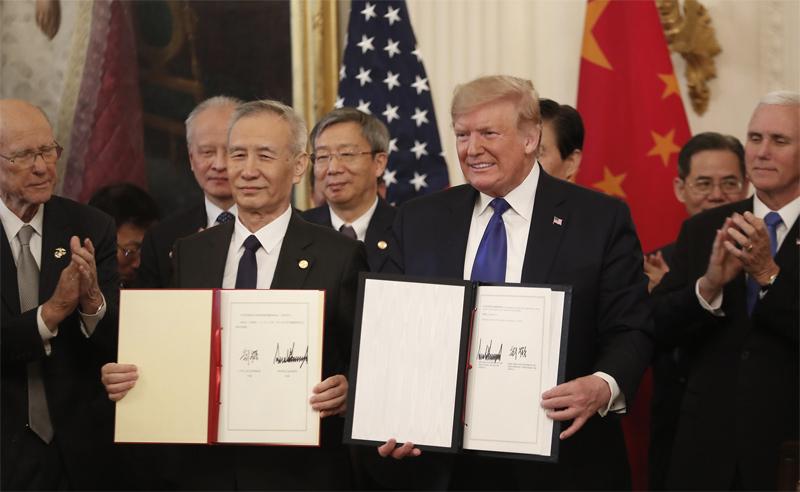
U.S. and China Sign Phase One of Trade Deal
- Source: Bloomberg
- 16 Jan 20
The U.S. and China signed what they billed as the first phase of a broader trade pact on Wednesday amid persistent questions over whether President Donald Trump’s efforts to rewrite the economic relationship with Beijing will ever go any further.
The deal commits China to do more to crack down on the theft of American technology and corporate secrets by its companies and state entities, while outlining a $200 billion spending spree to try to close its trade imbalance with the U.S. It also binds Beijing to avoiding currency manipulation to gain an advantage and includes an enforcement system to ensure promises are kept.
The ceremony in a packed East Room at the White House included Trump, dozens of American business people and U.S. lawmakers and Chinese officials and marked a rare moment of friendship lately between the world’s two largest economies. Acrimonious talks stretching back almost three years have roiled financial markets, cast a cloud of uncertainty over investment decisions and hurt growth in both nations.
“This is a very important and remarkable occasion,” Trump said. Fixing what he sees as the injustices of past trade deals is “probably the biggest reason why I ran for president,” he added. “Together we are righting the wrongs of the past.”
In a letter to Trump read out at the ceremony, Chinese leader Xi Jinping said the deal proved the two sides could work together to bridge their differences and declared it “good for China, the U.S. and the whole world.”
The benchmark S&P 500 set an intraday record for the sixth consecutive trading session, finishing short of an earlier all-time intraday high. Stocks in Asia were mixed Thursday, with shares in Hong Kong largely flat.
Economic Dialogues
The deal, sealed on the same day the House voted to refer articles of Trump’s impeachment to the Senate, seems most focused on arriving at peace in the trade war. Among its requirements is a resumption of the economic dialogues that past administrations have held with China.
But the new pact has already been criticized for what is missing. It does nothing to address areas like what U.S. authorities have long claimed is China’s state-backed hacking of American companies and government institutions. Nor does it require the Asian power to reform the vast web of state subsidies that form the spine of its model of state capitalism and have helped fuel the rapid growth of Chinese companies internationally.
The administration says many of those issues will be covered in a second phase of a deal, though when those talks will begin and how long they will take remains uncertain. In the meantime, the U.S. is also set to maintain tariffs on roughly two-thirds of imports from China, something that Trump on Wednesday said was essential as leverage over the country until it agreed to further reforms.
Asked about a phase two deal, Chinese foreign ministry spokesman Geng Shuang said Thursday afternoon that Beijing and Washington would have to to accommodate each others’ main concerns while implementing phase one.
“The two sides need to work together in the spirit of equality and mutual respect to strictly observe the trade agreement, accommodate each other’s core concerns and implement the phase one agreement,” Geng told reporters in Beijing.
Search
Our Navigation
Now in Ulaanbaatar
6:26 am
Nov 22, 2025
